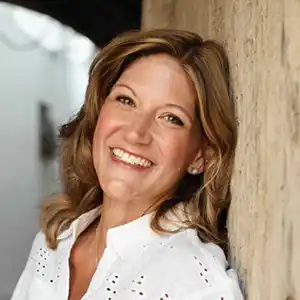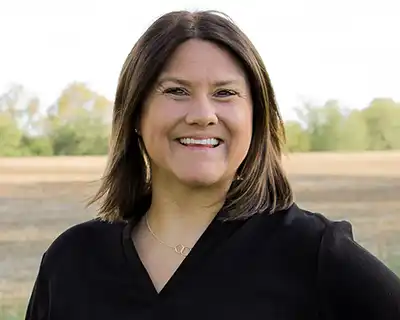Throughout 2021, Trust In Food is inviting leaders of the Foundational Partners of America’s Conservation Ag Movement to share their vision for the future of conservation and sustainability in U.S. agriculture. In this post, we spotlight Matt Plitt, executive vice president and chief operating officer at Valent U.S.A. LLC (Valent), an ACAM partner and founding member.
Tell us a bit about yourself. How did you arrive in this leadership role within your organization, and how does a commitment to sustainability/conservation inform how you show up to work each day?
I have enjoyed a 24 year career in the ag industry. I originally started with American Cyanamid that was later acquired by BASF where I spent time in sales and marketing roles. I later moved into distribution with Agriliance, a Land O’Lakes and CHS joint venture, where I gained very valuable experience managing total ag production portfolios and gained a true appreciation for the operational challenges in distribution and retail.
I joined Valent in 2010 and have been with the organization 11 years, first as vice president of sales and serving as COO for the North American business for the past 7.
We’re a wholly owned subsidiary of Sumitomo Chemical Company, a global organization with a long-standing commitment to sustainability. When the company was created in 1915 as the Sumitomo Chemical entity of the Sumitomo Group, they started the business based on sustainability, really trying to do what’s right for the environment in harmony with society. This commitment to sustainability is foundational to our corporate culture and SCC’s affiliates around the world. There is a concept in Sumitomo called “Jiri Rita”—our business, for society—and where the two come together, we take that very seriously. JIRI RITA is at the heart of what we do with the United Nations Sustainable Development Goals (SDGs).
What’s one book you’ve read recently that’s challenging how you think about sustainability, conservation or the future of food and agriculture?
Pre-pandemic, we were able to have our last company-wide meeting. At that meeting, I issued “The Hero Effect,” by Kevin Brown, to our team. It’s not so much about sustainability but about how our daily words and our actions can have an effect on someone else, both good and bad—I firmly believe that our message and actions in modern ag can amplify a positive story for sustainability.
So few of the population really understand production agriculture. It is imperative that we have a clear message that resonates with the general public, to make others informed and also embrace the technological advances of agriculture. So much of what our farmers do is sustainable, but we don’t tell the story very well today.
In a sentence, describe Valent USA for executives in our audience who are unfamiliar with your work.
Valent USA is committed to leading with biorational, botanical and conventional chemistry, to provide solutions to growers whether food, fiber or fuel, organic or conventional. We believe we have a unique opportunity to lead the way in sustainable agriculture.
What is the biggest sustainability challenge your organization is facing, and how are you navigating possible ways to address and overcome that challenge?
The biggest challenge the industry has is there’s no true definition for sustainability. Everyone has their own idea. Consumers are dictating a lot of what goes on in production practices, especially in fresh markets like fruits and vegetables. We’ve got to figure out how we can provide tools and solutions through retailers to help meet those changing needs.
When we talk to farmers, they’re saying, ‘I own this land. I care about it. I’ve been protecting it for generations. I’m being sustainable.’ When you get into the commercial aspect of food and the food value chain, there’s this concept of, ‘How do we partner with growers to tell their story and equip them with tools to meet the needs of a changing consumer base?’
We are partnering with companies like SCS Global Services to understand certifications and validation points. We are looking at our portfolio and trying to define the sustainable attributes with our own Sustainable Solutions criteria—for example, good for conservation tillage and soil health. We are working to link our portfolio to sustainable practices based on credible science.
Can you share a bit about the Valent organization and its alignment, particularly on sustainability issues, with its parent, Sumitomo Chemical? Why is this sustainability commitment so important to your global organization, and how are you operationalizing that as you go to market in the U.S. and abroad?
I mentioned Sumitomo Chemical was founded as part of a sustainability effort. The Sumitomo group was originally in copper mining in Japan when the production process started negatively impacting the local forest. Very quickly, leadership realized, ‘This is not good.’ You don’t want that reflection on your company. We don’t want to damage our environment. The team worked to identify the problem and correct it by capturing the problematic waste product and finding a useful purpose for it which because Sumitomo Chemical’s first product, a fertilizer that was used in reforestation efforts. This effort has evolved over the years to strengthen sustainability efforts not just within the company but also into a global relationship with the United Nations and Sumitomo’s global support of the Sustainable Development Goals (SDGs).
All of Sumitomo’s businesses around the world have adopted different SDGs as part of our culture. Within Valent, we’ve identified five we’re committed to through 2025 with very specific targets. We’ll live that out and make that part of our culture and actions on a daily basis.
From a business perspective, we’ve identified sustainability as two fronts, Corporate and Commercial. Corporate Sustainability focuses on how Valent approaches the industry, how we can lead and educate and create change for the ag industry through sustainability. That also includes how we invest in facilities, operations, and future growth platforms.
Commercial sustainability is about how our portfolio fits into the farm and with growers and their sustainability practices. Our goal is to create tools supported by credible science and data, so growers are able to take our tools and solutions and translate them into something tangible and of value on their farm.
I’ve challenged our R&D team, ‘As you’re going through the discovery and development process, let’s capture everything that we can from a sustainability perspective, so it fits into our total messaging when we get ready to launch that product.’ Water and soil health metrics fit into that message around sustainability. We need to make credible data part of our robust portfolio message.
Valent is very public about its support of the United Nations Sustainable Development Goals. What is the business and social value of the SDGs to Valent and to its customers, and how are you using the SDGs to inform your research, development and go-to-market strategy? How do you see the SDGs applying to U.S. ag?
In the U.S., the five goals we are focused on are zero hunger which also includes advancing sustainable agriculture (SDG 2); quality education specific to agriculture (SDG 4); gender equality, which refers to our commitment to diversity, equity and inclusion (SDG 5); innovation and infrastructure (SDG 9); and responsible crop production and consumption (SDG 12).
Zero hunger and responsible production are directly connected to ag and our industry. We look at infrastructure and innovation as something that’s really important. We have two research farms and a state-of-the-art regulatory and formulations facility that ensures credible science is part of our pipeline development process as well as generates data required by regulatory review process with the U.S. Environmental Protection Agency. Those facilities give back to local economies and our industry by creating jobs, infrastructure, and innovation.
We’re committed to diversity, equity, and inclusion as an organization. As we look at the ag and food value chain changing so quickly. We need diverse backgrounds, educations, and experiences to help lead the industry in precision ag, food and ag policy, and meet consumer demands
At Valent we have a program called the Ag Education Partnership Program. That’s where we build strategic alignment with Future Farmers of America (FFA), with Agriculture Future of America (AFA), and also with Minorities in Agriculture, Natural Resources, and Related Sciences (MANRRS). Those three entities are our strategic partners as we look at diverse talent coming into our industry. Valent values their role in building future leaders and providing a pipeline of talent for the future of ag.
These ag education organizations can also educate students, teachers and families about the sustainable production practices on today’s farms. FFA has 750,000 members around the country, and we can reach them at an early age. Valent has partnered with FFA on a stewardship and sustainability curriculum in the ag education classroom. Students go through ag ed, and they hear about good work on farms to build out food for the world. Of those 760,000 students, not all will end up in production ag. Even if they are not on the farm or in the industry, they have that background and they can educate others.
Valent’s portfolio supports both row crop farmers as well as specialty crop growers. What innovations and advances in sustainability solutions for each segment are you most excited about – and for each, what’s one innovation yet on the horizon that could be a gamechanger for sustainability?
Valent is unique to North American ag because about half of our business sits in row crops, half in specialty. A lot of our competitors in the crop protection space really focus on some of the larger crops because of the return on investment. We’re unique in that we put a lot of emphasis on specialty crops, from discovery through research and development to commercialization.
In row crops, we have a dedicated research project at our Midwest Ag Research Center (MWARC) in Seymour, IL focused on our long-term soil health strategy. We are looking at how we use precision ag and digital imagery to track progress on soil health with our portfolio of mycorrhizal fungi. We are looking at other amendments of mycorrhizal to help plant production, crop yields and grower value. We are studying potential benefits including water management, optimization of nutrient uptake, root mass and root health.
Valent also has a partnership with the Donald Danforth Plant Science Center in St. Louis. At that facility, we’re able to use digital imagery, including virtual reality tools, to look at root growth and progress without having to go in and disrupt the plants growth. These tools allow our scientists to assess the impact of specific soil health products on the flow of nutrients through the plant.
Our team is committed to providing new tools to growers in the specialty markets with biorational, botanical and conventional chemistry. Valent expansion with plant growth regulator products and uses is positively impacting bloom, crop set and crop maturity. These tools can be used to aid in labor-management, the health of that crop and the actual yield. We’ve been working with some precision ag tools to look at weather, soil type and other predictive modeling characteristics that help determine the ideal time of application for plant-growth regulators. That allows us to time product to get the optimum benefit, and you don’t have wasteful uses or mistimed applications.
Our Valent ReTain CA Almonds mobile app is new for California and customized for growers. Growers input information about a specific almond orchard, and the tool will give the optimize window of time to apply Retain onto that crop for the best results. We call it decision ag.
What 3 sustainability/conservation trends have you most excited and optimistic about the future of U.S. agriculture and farming in the next 4 years?
I think root and soil health is an emerging hot topic. Valent has an opportunity to expand solutions in this area with our technology and research we’re doing on mycorrhizal fungi. There’s still a lot to be learned. It’s going to take a lot of leadership, science and credibility.
There’s going to continue to be this major trend on pollinator-friendly discoveries. As an innovation company, we’ve factored that into our early phase of discovery and are trying to understand the impacts to the environment, especially beneficial insects. Using botanical insecticides, biological and conventional chemistry puts us in a great position to have a pollinator-friendly approach to insect challenges that are out there.
Labor challenges continue to be a major factor in agriculture. We have a new biological thinning agent launching this year called Accede. It’s the first biological thinning product available for pome fruit. If you have too many apples, for example, instead of a manual process, you can start using this biological tool to drop some of those apples. This allows growers to manage some of their labor and give them optimum returns on that crop.
Another major trend is just the industry awareness around sustainability. That’s why our partnership with Farm Journal and USDA’s Natural Resources Conservation Service as part of America’s Conservation Ag Movement is so important. We believe we have an obligation and a great opportunity to help tell the positive story of modern agriculture.
What 1 sustainability trend or issue keeps you up at night and gives you heartburn?
For me, we know we’ve got a growing population, we know the acreage is going to be limited, so it’s about productivity. Between the regulatory process and the consumer demands, it’s making it tougher to focus on one attribute or benefit, like yield.
How do we as a crop protection manufacturer equip growers to optimize their yield and do it in a way that meets the need of regulatory and consumer pathways? It’s a very challenging balance. It is a long and expensive process to develop new tools for grower. We’ve got to be looking 10 years ahead to develop new innovations to optimize yield, support sustainable ag, and meet the needs of the foot value chain.
What’s the single most important action step that sustainable food and ag professionals should be taking in the next 12 months?
Because less than 2% of the population understands production ag, I think we owe it as an industry—whether it’s through America’s Conservation Ag Movement, CropLife America, or other partnerships to go out and truly tell the ag story. We do so much and so many good things as an industry, but we need to get better at telling our story.
The U.S. Department of Homeland Security deemed agriculture an essential business [during the COVID-19 pandemic]. So much of what we do is done in a sustainable way. How do we get a platform to share what growers are doing to protect our environment and deliver safe, abundant, healthy food? Individual companies can’t do that alone. It’s really going to take an industry voice.



